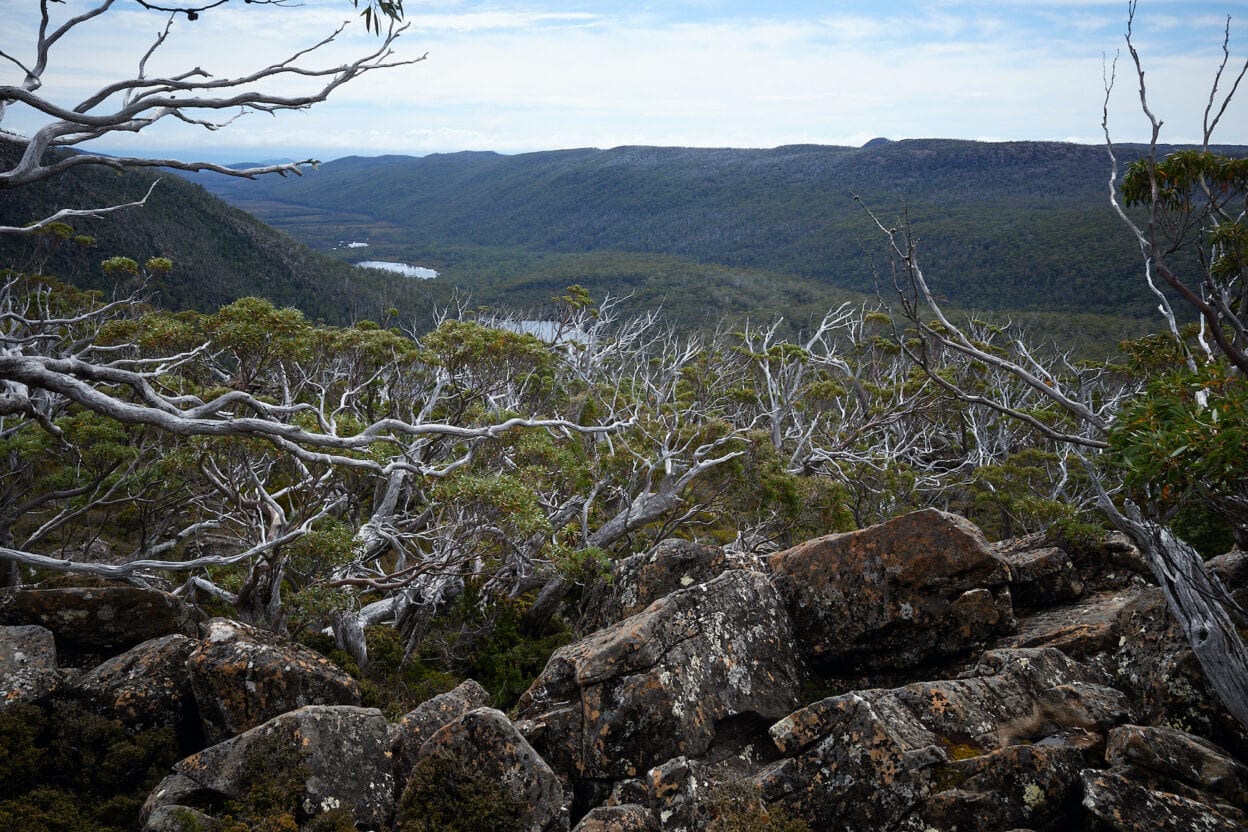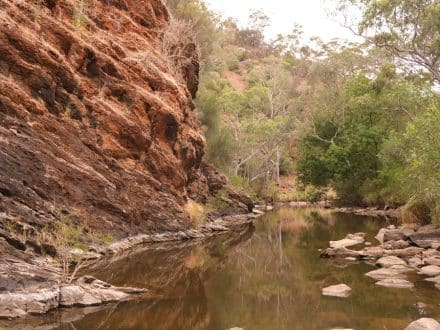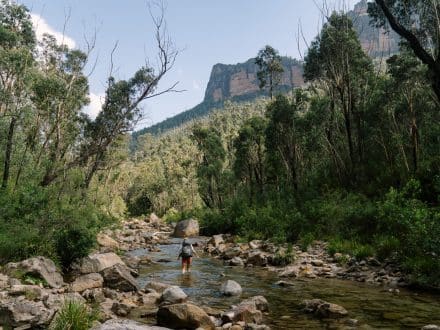A group of mates have their senses and minds ignited by the glory of Tasmania’s first national park.
In the depths of Melbourne lockdown, amid fiercely competitive games of 500 conducted weekly over Zoom, a heavenly vision took shape. Four mates, a ute full of camping gear, and the breathtaking trails of Tasmania at our feet. You find us in the back end of our trip, where, for the first time, after three weeks along the eastern-then-southern coastline, with their otherworldly capes, immense estuaries and spectacular beaches, we finally ventured inland.


As you move inward and upwards the air becomes lighter, more crisp. Everything livens at the taste of this pristine environment, the eyes, the nostrils and sinuses, the hair on your arms and legs, the ears adjusting to a new kingdom of silence and stillness. We could hear the absence of waves. Bird calls became all the more piercing. A clarity of thought and sensation emerged in line with the brisk smarting of our skin.
About an hour-and-a-half north-west of Hobart we found ourselves in Tasmania’s first national park. Inauguration of the Mount Field National Park in 1916 foreshadowed a rich culture of conservation, with over 40 per cent of Tasmania now protected in national parks and reserves.
In the stead of that icy climate, biodiversity flourished as eucalypt and rainforests took root, producing a haven for modern-day plant lovers. After garnering some intel at the local watering hole, we decided the Tarn Shelf Circuit was the walk for us. Here we would see the remains of these monolithic glaciers; vast valleys, hollows of mountainous earth birthed by glacial erosion which became a series of tarn lakes, filled as the last straggling ice formations bid farewell to their solid state.

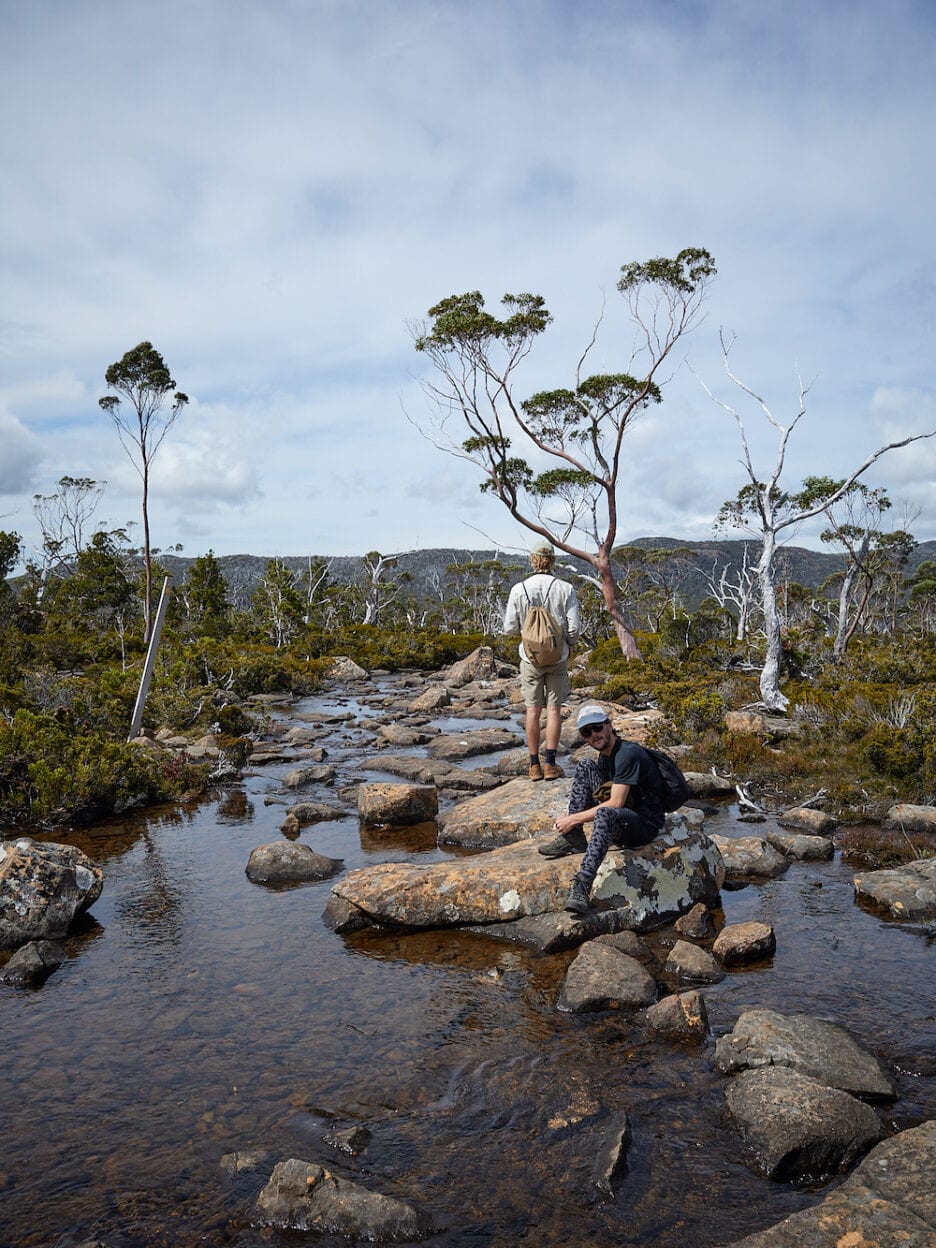
At a length of 15.6 kilometres, the circuit takes you through distinct climate zones, each with extensive floral diversity manifested by a range of vegetation types. Alpine woodlands form a canopy of Tasmanian snow gums. Meanwhile, morphological diversity toward the mid-layer is embodied by striking pandani. With their wavy trunks and rich leafy heads of hair, it’s difficult not to personify them as one of your nonconformist friends. We saw ancient deciduous beeches, whose siblings in the genus Nothofagus have been discovered in fossils over 80 million years old. If you find the enthusiasm to tackle this walk during the end of autumn, you will see a magnificent colourscape as the leaves of the beech turn a reddish brown before gliding to the ground. Walking anticlockwise gives you a slower climb, and ends with the highest viewpoints.
We chose to go clockwise. A shorter but steeper climb immediately opens up unimpeded views and we spent the rest of the walk with a glint in our awestruck eyes.
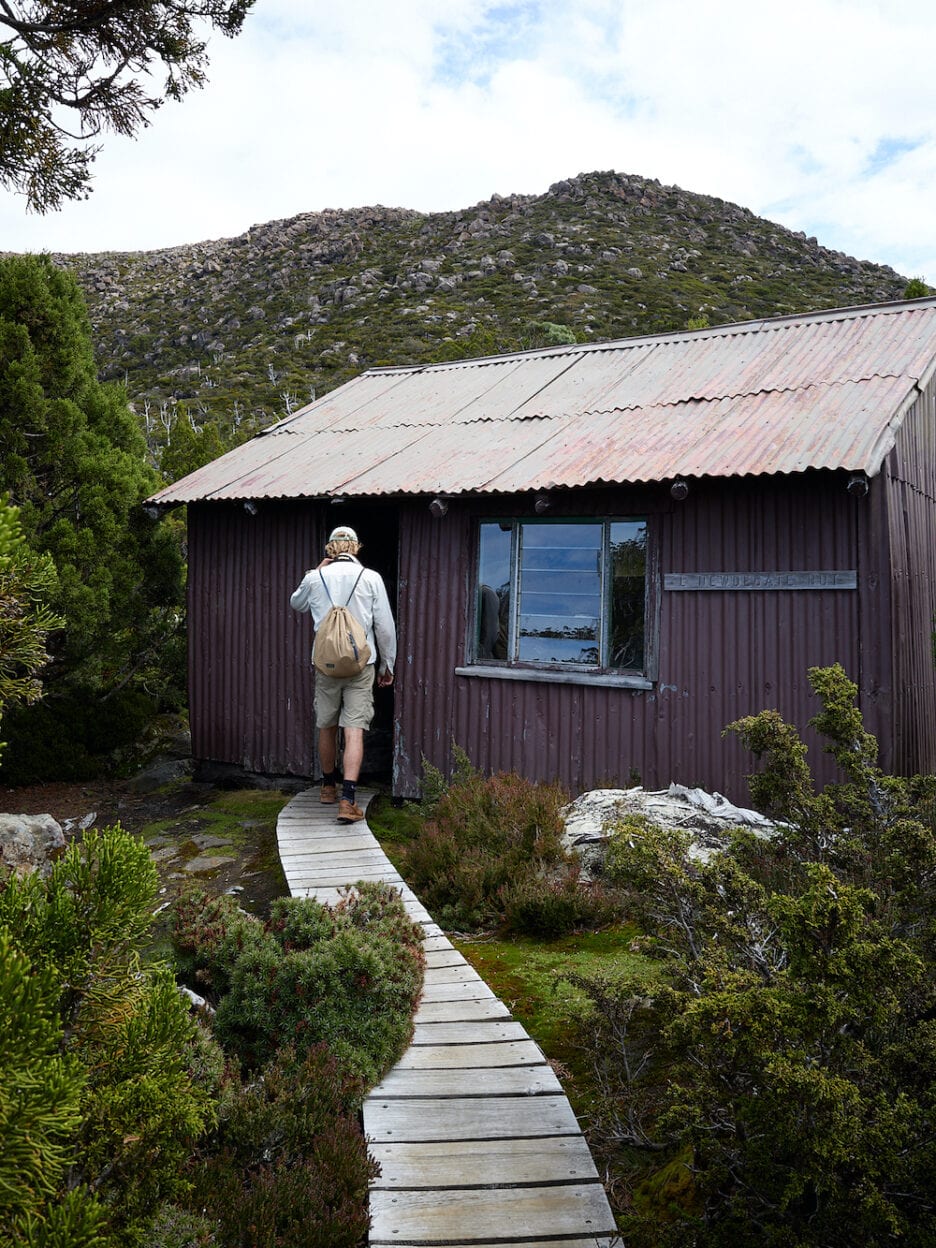

At the first lookout, dolerite intrusions provide perfect viewing platforms for lakes Seal and Platypus. Looking down and out over kilometres of valley strewn with a mesmerising constellation of tarns, your senses are overwhelmed.
As we acclimatise to this beauty, after the initial shock subsides, the transcendent environment starts to meld with the consistent cadence of steps, a mixture which in turn lends itself to meditation. The canopy begins to drop off and alpine heathlands form low dense vegetation. A boardwalk is provided so as not to disturb the smaller plants, and a close eye to the ground is rewarded with hundreds of endemic species not to be found anywhere else in the world. After ascending you traverse along the ridge of tarns, ensuring to splash this unforgettable water over your face as many times as possible, before a relaxing descent back down toward Lake Seal. Here, with the hallowed mantra of ‘never regret a swim’ ringing in our ears, we had a cleansing cool down dip.
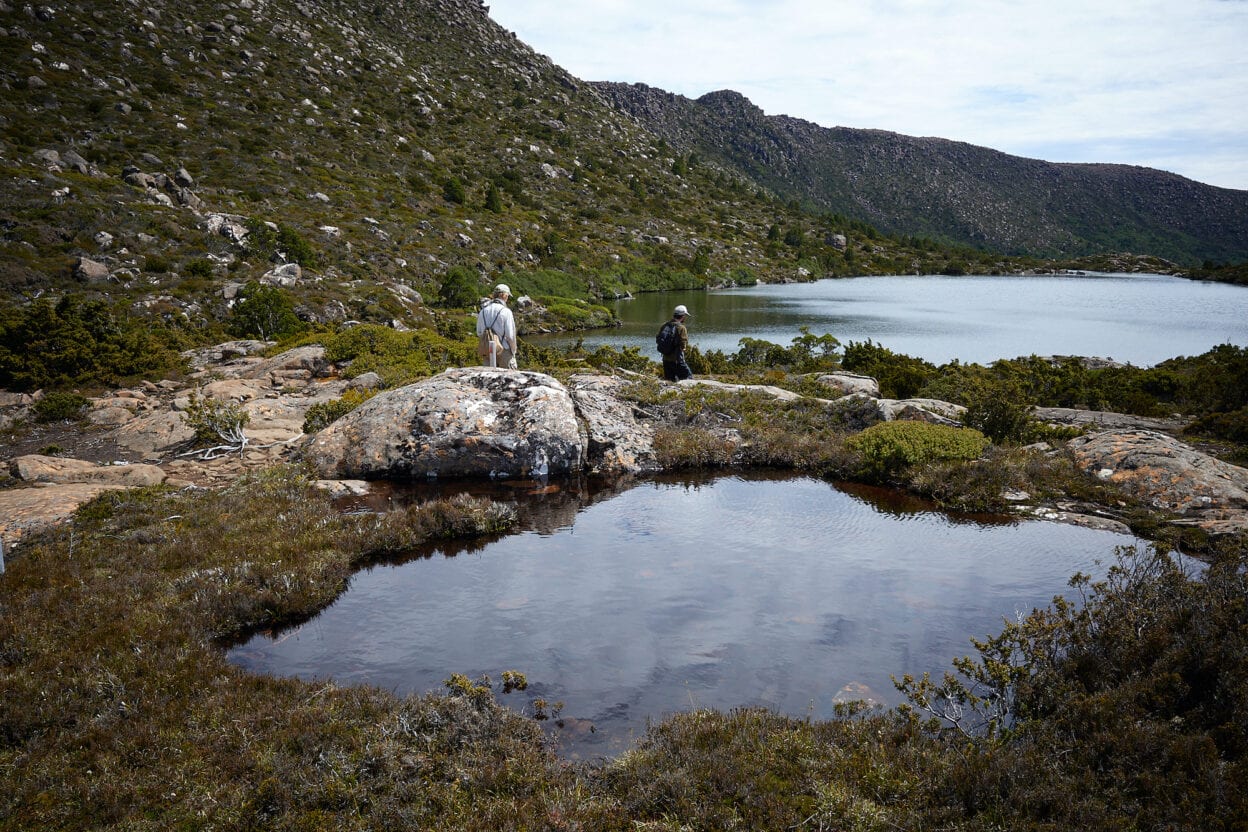
Huts to hunker down in overnight are dotted across these trails. Each contained a well-leafed logbook; our favourite entry was penned by a certain ‘E.B.’, which read: “Making beautiful memories with the love of my life. Hoping that next time we pass here, she may be my wife.” Not to diminish our mateship, but we all agreed it was essential to return with a significant other somewhere down the track.
